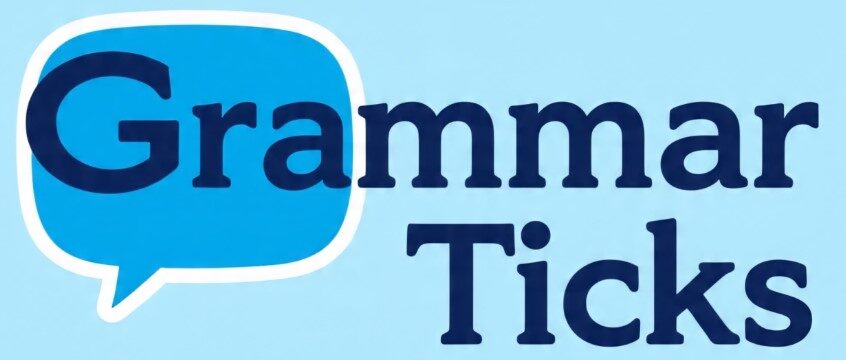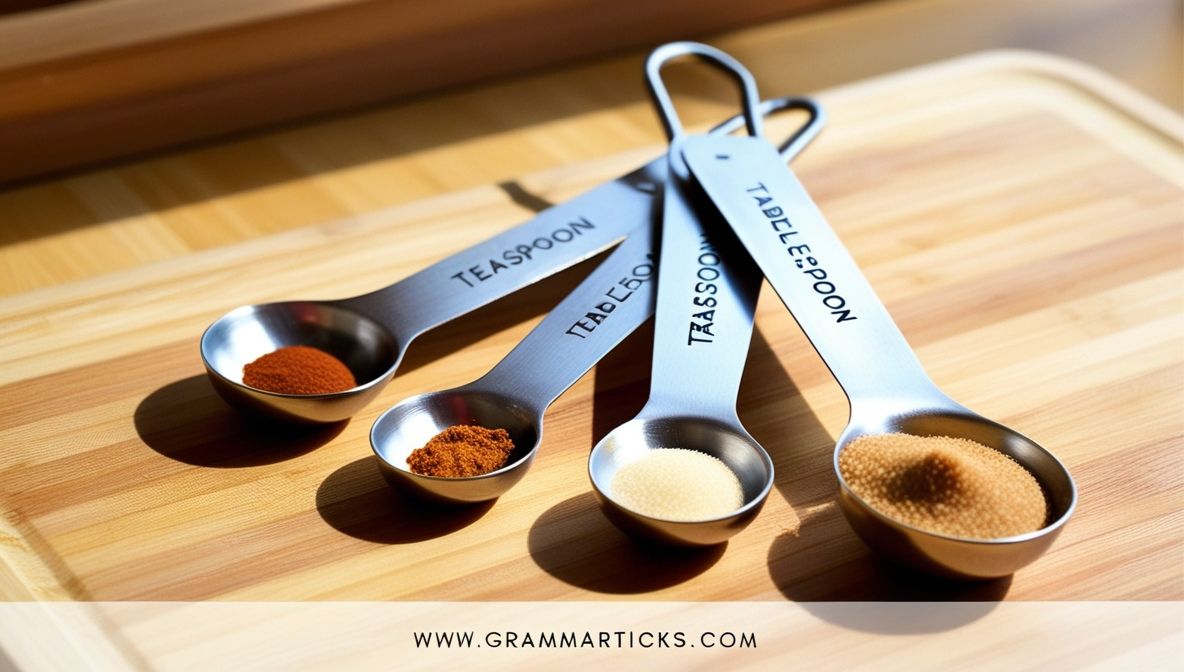Understanding how to use “teaspoon to tablespoon” in writing might seem simple, but it comes with specific grammar rules you can’t ignore. In recipes and instructions, choosing the right form singular or plural makes your message clear and professional. This guide covers all the essential grammar rules for measurements, including the teaspoon to tablespoon, and more.
You’ll also learn how to avoid common mistakes like writing “1 teaspoons” or “2 tablespoon,” which often pop up in recipe blogs and instructions. By the end, you’ll be confident using English grammar for kitchen measurements and expressing them the right way every time. Let’s dive in and clean up that cooking vocabulary!
Common Measurement Nouns: Countable vs Uncountable in Recipes
When you’re working with recipe language, it’s key to spot countable vs uncountable nouns in recipes. Teaspoon and tablespoon both act as countable nouns each unit stands alone. You say “one teaspoon,” not “one teaspoons.” That helps you avoid the frequent slip ups in kitchen language. Even though measurement words in English sometimes seem abstract, they follow standard plural rules like any countable item.
Singular and Plural of Teaspoon and Tablespoon
Here’s how these units change depending on quantity:
- Singular: teaspoon, tablespoon
- Plural: teaspoons, tablespoons
Keep it simple. Use the singular when there’s exactly one, and plural for more. If you write “1 teaspoons” instead of “1 teaspoon,” that’s a classic grammar mistake in recipe writing. It’s similar to error margins in everyday language only one “s” makes a measurable difference.
Tables for Easy Reference
To keep things tidy, here’s a quick visual:
| Quantity | Correct Form | Incorrect Form |
|---|---|---|
| 1 | 1 teaspoon | 1 teaspoons |
| 2 or more | 2 teaspoons | 2 teaspoon |
| 1 | 1 tablespoon | 1 tablespoons |
| 2 or more | 2 tablespoons | 2 tablespoon |
This helps curb confusion about recipe grammar tips, especially when you move from unit conversion in English sentences like “2 tbsp” to full phrasing.
Using “A” or “An” with Measurement Terms
You might wonder whether to say “a teaspoon” or “an teaspoon.” Always use “a teaspoon” because “teaspoon” starts with a consonant sound. That holds for “tablespoon” too — you’d never write “an tablespoon.” If you write “a tablespoonful” or “two tablespoonfuls”, notice the same pattern: singular gets “a”, plural just uses the plain noun.
Writing Clear Recipe Instructions
Clarity matters when you’re giving cooking instructions. Use:
- “Add 1 teaspoon of salt,” never “ADD 1 teaspoons”
- “Stir in 2 tablespoons of sugar,” not “2 tablespoon”
You follow the English recipe vocabulary convention. Watch for punctuation too and avoid run‑on directions. Clarity and brevity win in recipe writing.
Common Pitfalls and How to Avoid Them
Avoid these common grammar errors with recipe terms:
- Saying “teaspoonfuls” and “tablespoonfuls” correctly helps. The plural simply adds an “s.”
- Steering clear of mistakes like “is tablespoon countable or uncountable?” helps you anchor the right form. Tablespoons are countable.
- Watch unit conversion contexts: “1 tablespoon = 3 teaspoons” uses singular forms on both sides.
FAQs
Do we say “1 teaspoons” or “1 teaspoon”?
You say “1 teaspoon” — singular stays singular when you have one.
What is the plural of tablespoon?
It’s “tablespoons”—just add an “s” for more than one.
Is tablespoon countable or uncountable?
It’s countable. You can have one tablespoon or many tablespoons.
Synonyms and LSI Vocabulary You May Spot
- Teaspoonfuls, tablespoonfuls — tiny tweaks that mean the same but sound more conversational
- Measurement terms in English, proper noun usage in cooking measurements, grammar guide for cooking terms — all tie into our focus
- Talking about using measurement words in English, like grammar-savvy friends sharing tips
A Quick Summary
Understanding teaspoon to tablespoon grammar doesn’t have to be hard. Just remember to use singular for one and plural for more than one. Avoid common mistakes like “1 tablespoons” or “2 teaspoon.” These little errors can confuse your reader.
Stick to clear and simple phrases in your recipes. Use the right measurement terms to sound more natural and professional. Whether you’re writing for fun or sharing a recipe online, correct grammar makes a big difference.
Now you know how to use teaspoon to tablespoon the right way every time.

